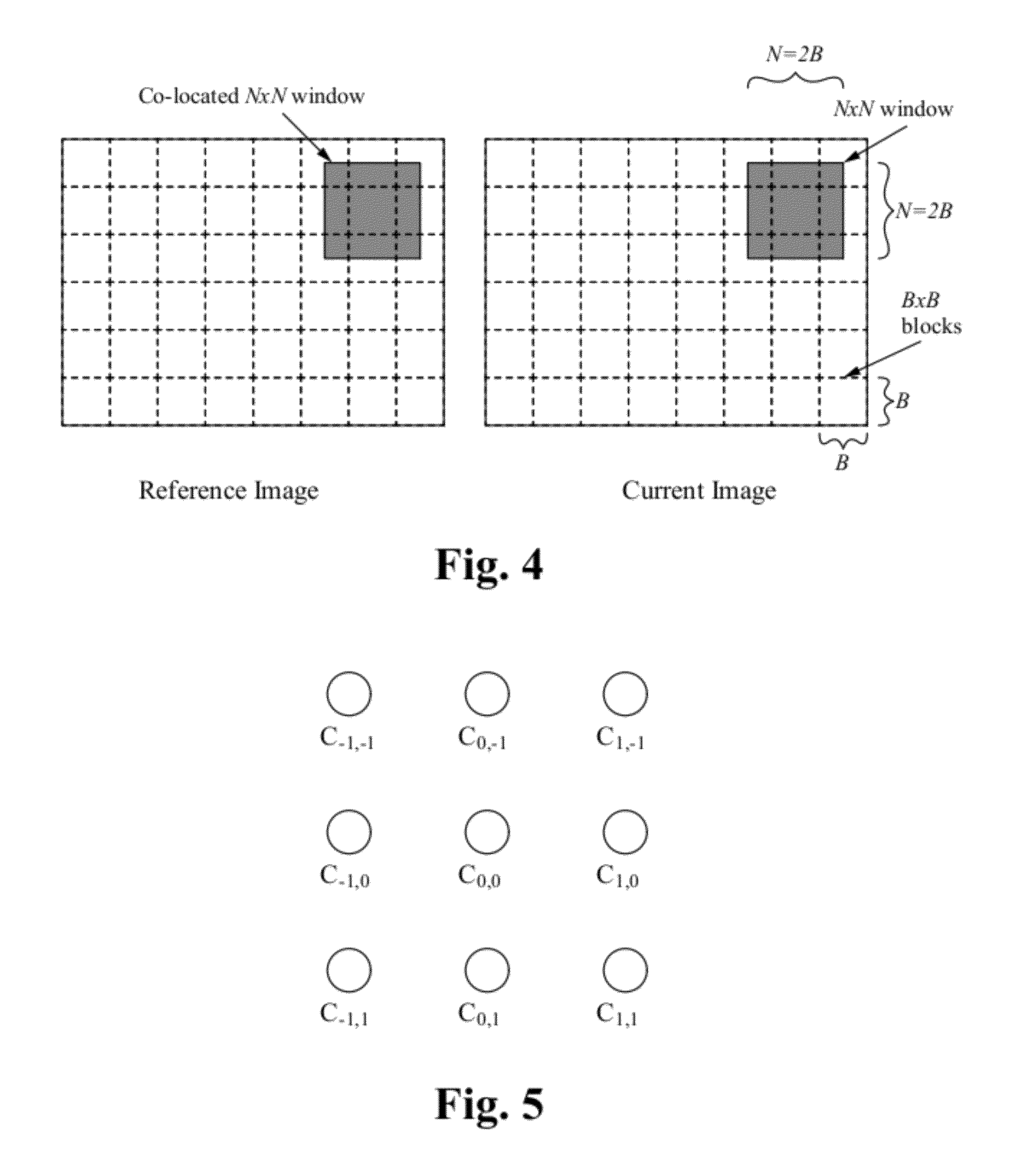Method for highly accurate estimation of motion using phase correlation
a phase correlation and motion estimation technology, applied in the field of image alignment, can solve the problems of insufficient accuracy, inability to accurately apply the same algorithm to reduced-resolution images, and prohibitively complex pixels to be processed, so as to achieve more accurate results, improve accuracy, and operate much more efficiently
- Summary
- Abstract
- Description
- Claims
- Application Information
AI Technical Summary
Benefits of technology
Problems solved by technology
Method used
Image
Examples
Embodiment Construction
[0052]Embodiments of the present application are directed to an image alignment method. Those of ordinary skill in the art will realize that the following detailed description of the image alignment method is illustrative only and is not intended to be in any way limiting. Other embodiments of the image alignment method will readily suggest themselves to such skilled persons having the benefit of this disclosure.
[0053]Reference will now be made in detail to implementations of the image alignment method as illustrated in the accompanying drawings. The same reference indicators will be used throughout the drawings and the following detailed description to refer to the same or like parts. In the interest of clarity, not all of the routine features of the implementations described herein are shown and described. It will, of course, be appreciated that in the development of any such actual implementation, numerous implementation-specific decisions must be made in order to achieve the dev...
PUM
 Login to View More
Login to View More Abstract
Description
Claims
Application Information
 Login to View More
Login to View More - R&D
- Intellectual Property
- Life Sciences
- Materials
- Tech Scout
- Unparalleled Data Quality
- Higher Quality Content
- 60% Fewer Hallucinations
Browse by: Latest US Patents, China's latest patents, Technical Efficacy Thesaurus, Application Domain, Technology Topic, Popular Technical Reports.
© 2025 PatSnap. All rights reserved.Legal|Privacy policy|Modern Slavery Act Transparency Statement|Sitemap|About US| Contact US: help@patsnap.com



